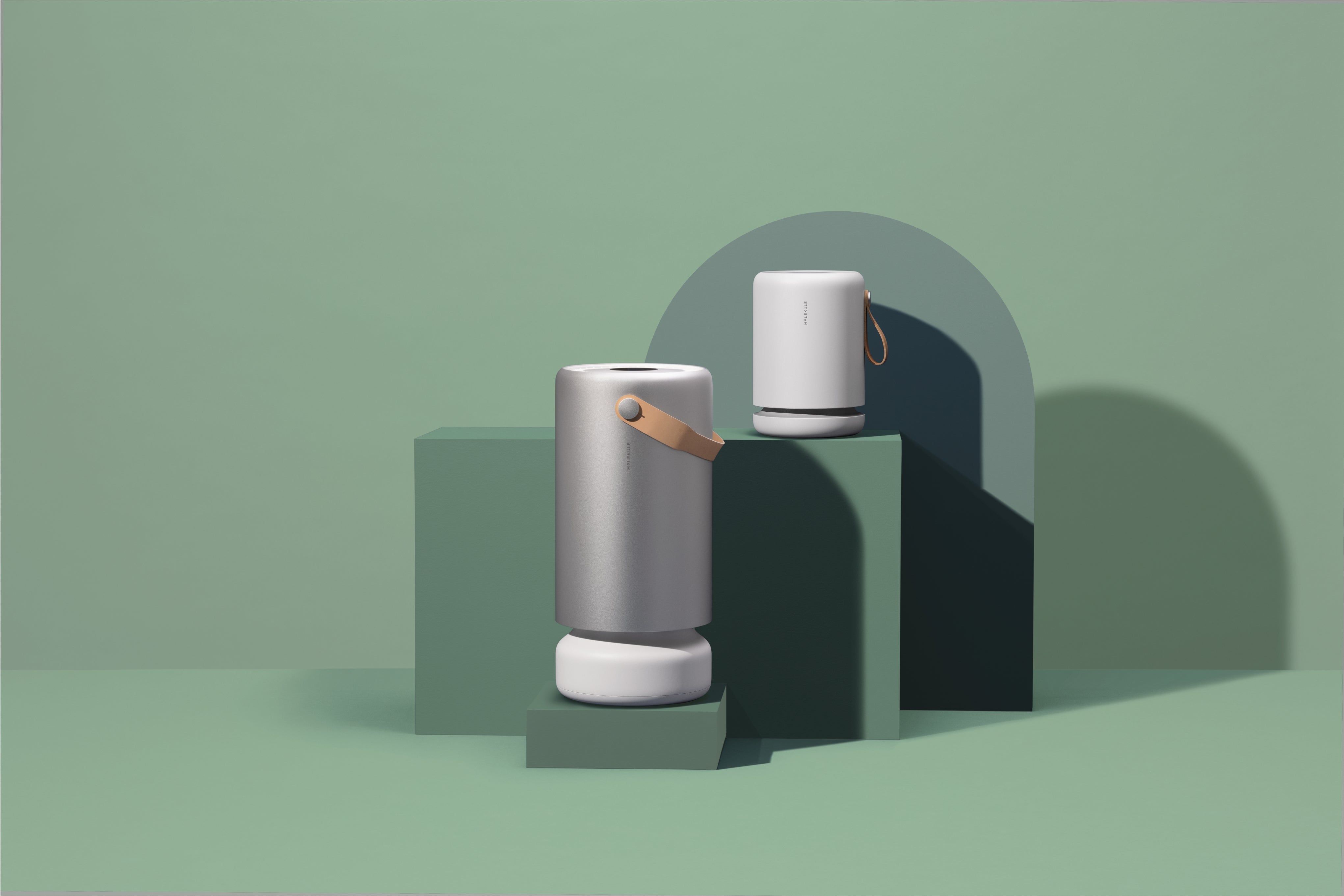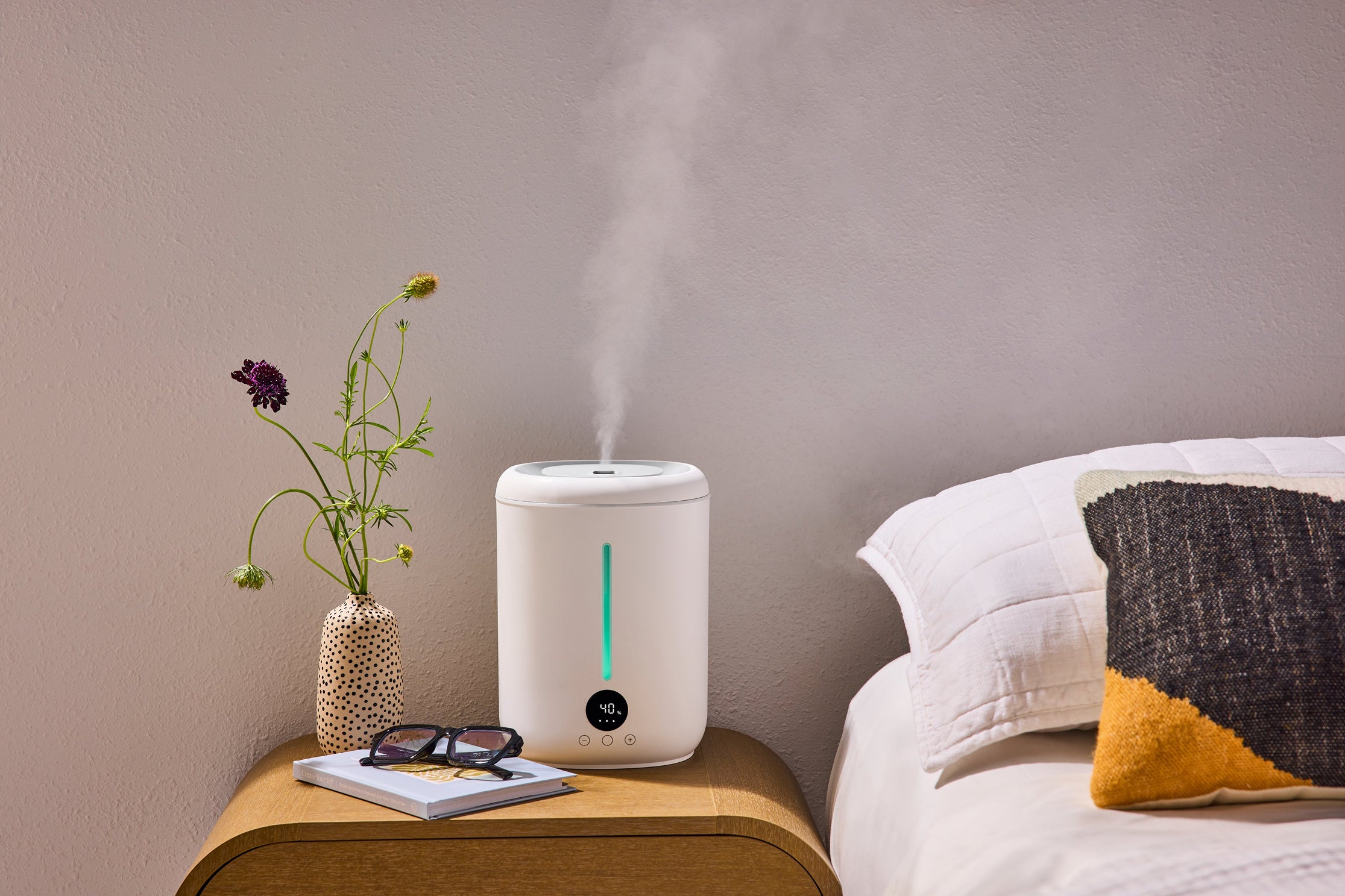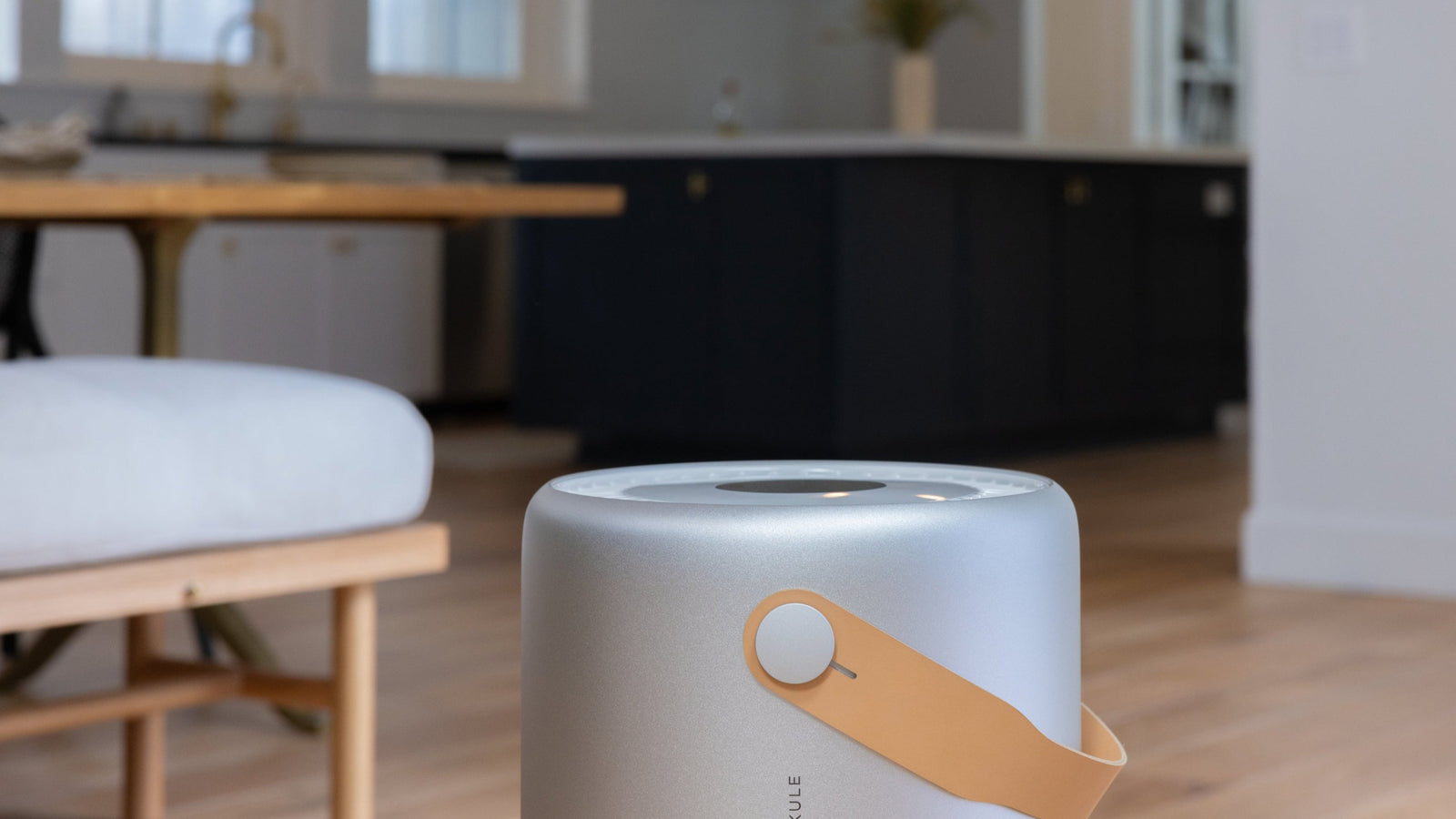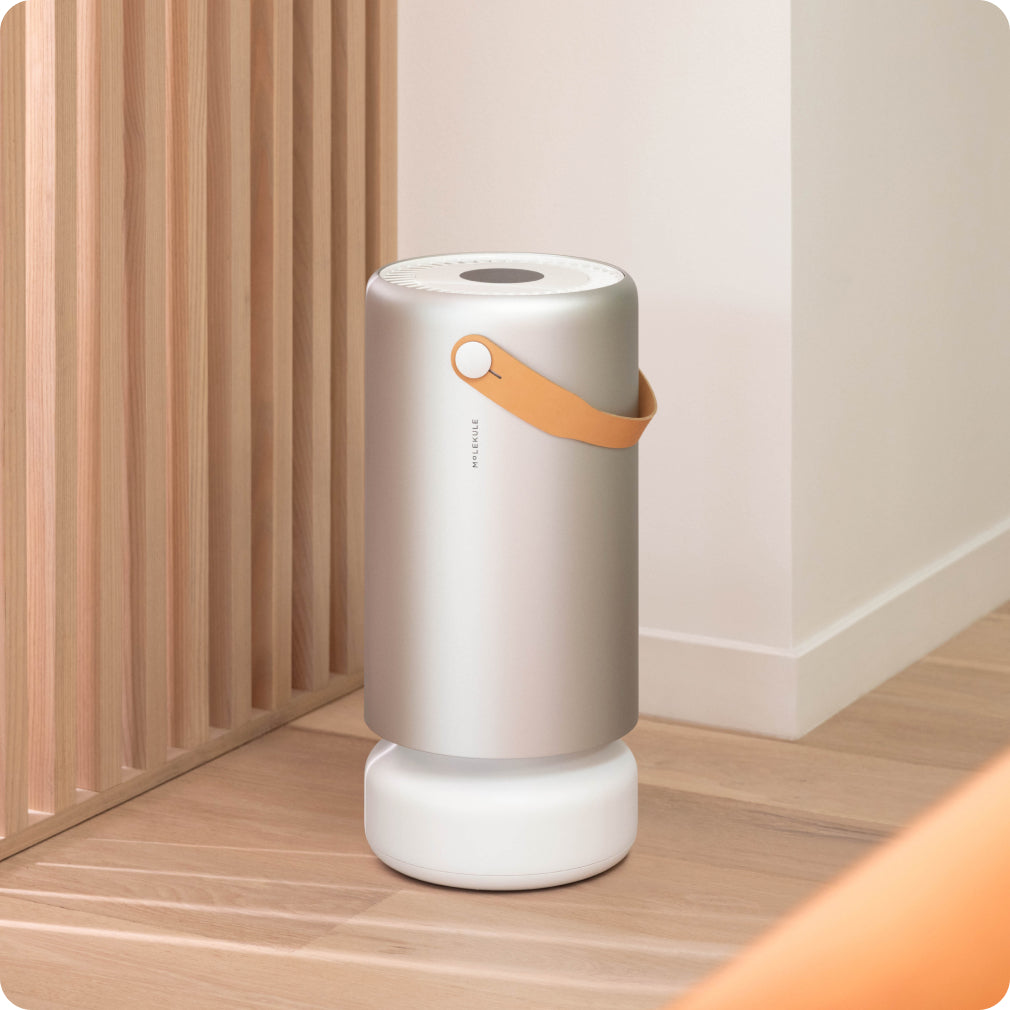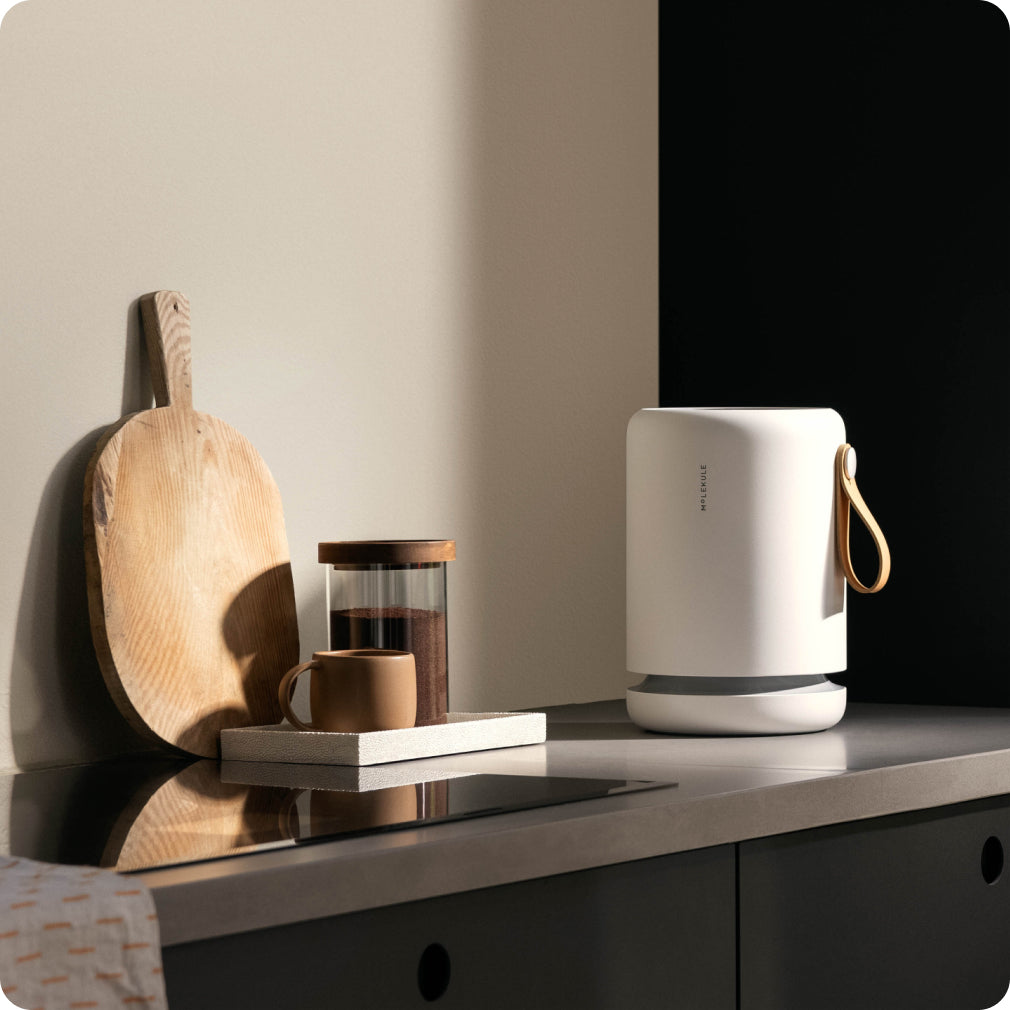Mold is one of those problems that sneaks up on you. Sometimes you can see it, but often it’s the invisible spores floating through the air that cause the most trouble. That’s where air purifiers for mold come in. A good system can capture or even destroy those airborne spores before they settle and grow, making a huge difference for your indoor air quality.
Just keep in mind: while purifiers can stop spores from spreading, they can’t tackle mold that’s already on your walls or ceilings. For real protection, it takes a mix of moisture control, cleanup, and the right air purifier working together.
Key Takeaways
-
Spore Capture: HEPA filters trap 99.97% of airborne mold spores sized 0.3 microns and larger.
-
Size Compatibility: Mold spores (1-5 microns) are well within HEPA filtration range.
-
Prevention Focus: Air purifiers prevent mold spread, not removal of existing growth.
-
Advanced Destruction: PECO technology destroys captured spores rather than just trapping them.
-
Comprehensive Approach: Combine air purification with moisture control and surface remediation.
The Dangers of Mold Spores
Mold spores are microscopic reproductive units of fungi that range in size from 1-5 microns, with some varieties reaching up to 40 microns. These tiny particles drift continuously through indoor and outdoor air, seeking suitable environments for growth. When spores encounter warm, moist surfaces, they begin dividing and developing into visible mold colonies that release thousands more spores into the air.
The airborne nature of mold spores makes them particularly problematic for indoor air quality. Unlike settled dust that remains on surfaces where it can trigger allergies, spores remain suspended in air currents for extended periods, allowing them to penetrate deep into respiratory systems. Studies by the Centers for Disease Control (CDC) show that people with mold sensitivity experience upper respiratory symptoms, increased asthma symptoms, and skin irritation when exposed to airborne spores.
According to Live Science research, airborne fungi decrease 1.5 to 6 times faster when HEPA air purifiers operate compared to natural settling rates. This demonstrates how mechanical air filtration significantly accelerates spore removal from breathing zones, though the effectiveness depends on the specific technology you use and where you’ve placed the air purifier.
How Different Air Purifier Technologies Address Mold
Not all air purifiers are exactly the same. Here you can familiarize yourself with the three most common technologies, including HEPA filtration, the industry’s gold standard.
Traditional HEPA-Only Systems
Standard HEPA air purifiers provide mechanical filtration that physically traps mold spores within filter media. This approach effectively removes airborne spores during active operation, reducing the concentration of particles available for inhalation. Studies show these systems can remove 99.97% of particles in their target size range, making them useful for immediate spore reduction.
HEPA Filter Specifications and Mold Compatibility
|
Particle Type |
Size Range |
HEPA Effectiveness |
Capture Method |
|
Most mold spores |
1-5 microns |
99.97%+ |
Interception & impaction |
|
Fragmented spores |
0.3-1 microns |
99.97% |
Diffusion capture |
|
Large spores |
5-40 microns |
99.99%+ |
Direct interception |
|
Ultra-fine fragments |
0.1-0.3 microns |
95%+ |
Brownian motion |
The filtration process works like this: larger spores are captured through direct interception when they contact filter fibers, medium-sized particles follow airflow patterns until captured, and smaller fragments are trapped through diffusion as they move randomly through the filter matrix.
However, HEPA-only systems face several challenges: captured spores remain alive and can reproduce on filter surfaces, particularly in humid conditions. Regular filter replacement is critical to prevent the filter itself from becoming a mold source. Additionally, these systems only address airborne spores, not the underlying moisture conditions that enable mold growth.
This problem becomes particularly acute in humid environments where moisture supports active mold growth on organic filter materials. Understanding mold growth conditions reveals why filter-based systems require frequent replacement and may actually contribute to indoor mold problems if you don’t maintain them properly.
UV-C Light Integration
Some air purifiers combine HEPA filtration with UV-C germicidal lamps designed to kill captured microorganisms. While UV-C radiation can theoretically destroy mold spores, effectiveness requires sufficient exposure time and intensity. Most consumer UV-C systems lack the power and contact time necessary for reliable spore destruction.
Furthermore, UV-C systems can produce ozone as a byproduct, which the EPA identifies as a respiratory irritant. The UV radiation can also degrade HEPA filter materials over time, reducing filtration efficiency and requiring more frequent filter replacement.
Ionization and Electrostatic Systems
Ionizing air purifiers charge particles to enhance collection efficiency but present significant drawbacks for mold control. These systems can release harmful ozone into indoor air, and the chemical reactions they create may actually increase fine particle concentrations (PM2.5) that can carry mold fragments deeper into respiratory systems.
Studies demonstrate that ionizers provide insufficient contact time and energy to reliably destroy mold spores, often only temporarily disabling them rather than ensuring complete elimination.
Ideal Placement and Usage Strategies
Position your air purifiers in areas where mold problems typically develop: basements, bathrooms, kitchens, laundry rooms, and rooms with poor ventilation. Place units away from walls and furniture to ensure optimal airflow circulation, and avoid corners where air circulation may be restricted.
For homes with existing mold issues, run air purifiers continuously at higher speeds to maintain constant spore removal from breathing zones. Monitor humidity levels with hygrometers and maintain indoor humidity between 30-50% to prevent mold growth.
More Actions to Take
Air purifiers work most effectively as part of a comprehensive mold management strategy that addresses the root causes. Pay close attention to these additional factors.
-
Moisture Control: Use dehumidifiers to maintain humidity levels below 50%, fix leaks promptly, ensure proper ventilation in bathrooms and kitchens, and address any water intrusion issues.
-
Physical Cleanup: Clean existing mold growth from surfaces using appropriate mold removal solutions, replace contaminated materials that cannot be effectively cleaned, and address structural issues that contribute to moisture problems.
-
Ongoing Prevention: Conduction regular inspections of prone areas, pay prompt attention to water damage, perform proper HEPA filter maintenance, and use continued air purification to prevent spore accumulation.
What Air Purifiers Can and Can’t Do for Mold Control
Air purifiers excel at removing airborne mold spores before they settle and establish new colonies, significantly reducing inhalation exposure and preventing spread to clean areas. But they can’t eliminate existing mold growth on surfaces, address moisture sources that enable mold development, or replace the need for physical cleaning and remediation of contaminated materials.
The most effective approach combines air purification with source control: eliminate moisture problems, physically remove existing mold growth, and use continuous air purification to prevent recontamination. Learn about more air purifier benefits for comprehensive indoor air quality improvement beyond mold control.
Health Benefits of Effective Mold Spore Control
Effective mold spore removal provides significant health benefits, particularly for sensitive individuals. Reduced spore exposure alleviates allergy symptoms, including sneezing, coughing, and nasal congestion. Asthma sufferers experience fewer triggered attacks and improved breathing comfort with consistent spore reduction
Studies demonstrate that improved indoor air quality through effective spore control contributes to better sleep quality, reduced fatigue, and improved overall respiratory health. Mindfulness techniques can also help to create a calm environment that’s conducive to deep sleep. Children and elderly individuals, who are particularly vulnerable to mold-related health effects, benefit significantly from reduced airborne spore exposure.
Consistent mold spore control prevents the accumulation of mycotoxins. These are toxic compounds produced by some mold species that can cause serious health effects even in individuals without specific mold allergies. Understanding allergy triggers can help you identify areas where effective air purification provides maximum health protection.
Selecting the Right Mold Control Technology
For homes with existing mold problems, prioritize systems with spore destruction capabilities that can handle high particle loads without becoming contamination sources themselves. Large spaces require adequate Clean Air Delivery Rate (CADR) to process entire room volumes effectively.
The Molekule Air Pro combines PECO molecular destruction with HEPA capture efficiency in spaces up to 1,000 square feet, making it ideal for larger homes or areas with persistent mold challenges. FDA-cleared as a Class II medical device, it provides hospital-grade air purification for serious mold control applications.
For personal spaces and bedrooms where mold exposure during sleep poses particular health risks, the brand’s mini air purifiers deliver the same molecular destruction technology in a compact form suitable for spaces up to 250 square feet.
Frequently Asked Questions
Do air purifiers actually kill mold spores or just trap them?
Traditional HEPA air purifiers only trap mold spores on filter surfaces where they can remain viable and potentially reproduce. Advanced PECO technology destroys spores at the molecular level, turning them into harmless carbon dioxide and water vapor, preventing any possibility of reproduction.
What size mold spores can HEPA filters capture effectively?
HEPA filters capture 99.97% of particles 0.3 microns and larger. Since mold spores typically range from 1-5 microns, they fall well within HEPA capture capabilities. However, smaller spore fragments around 0.3 microns may occasionally pass through traditional filters.
Can air purifiers prevent mold growth in my home?
Air purifiers prevent mold spread by removing airborne spores before they settle and establish new colonies. They cannot eliminate existing mold growth or address moisture sources that enable mold development. Effective mold prevention requires combining air purification with humidity control and prompt moisture problem resolution.
How often should I replace filters when dealing with mold problems?
Traditional HEPA filters should be replaced more frequently than manufacturer recommendations when dealing with active mold issues, as captured spores can grow on filter media. PECO systems destroy captured spores, extending filter life and eliminating the risk of filter-based mold growth.
Which rooms benefit most from mold-focused air purification?
Basements, bathrooms, kitchens, laundry rooms, and any areas with poor ventilation or moisture issues benefit most from continuous mold spore removal. Bedrooms also warrant protection since mold exposure during sleep can be particularly harmful to respiratory health.
Is it worth investing in advanced mold destruction technology?
For homes with mold-sensitive occupants or recurring mold issues, air purifiers for mold with molecular destruction capabilities provide superior long-term protection by eliminating captured spores rather than allowing them to accumulate and potentially reproduce on filter surfaces.
